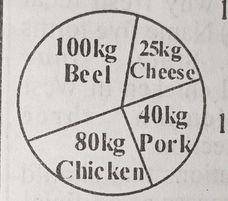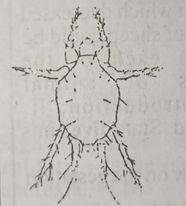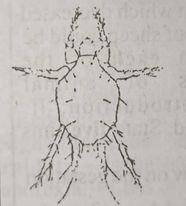WAEC past questions for Animal Husbandry is one that will help you prepare well for the main exam, that is why we are bringing this to your table.
In this post you are going to see all the 50 questions that WAEC will likely ask you, so you can study it and prepare well for the big day.
WAEC is known to be repeating questions, if your lucky, 5 to 6 questions here might be repeated and if that happens, you will be happy because you have seen it somewhere before.
WAEC Past Questions For Animal Husbandry
Below are all the WAEC past questions for Animal husbandry;
1. In livestock management, elastrator is used for
- A. disbudding
- B. castration
- C. debeaking
- D. insemination
- A. having high libido
- B. a good mother
- C. very prolific
- D. having good temperament
- A. restlessness
- B. frequent urination
- C. mounting other animals
- D. abnormal high body temperature
- A. I and II only
- B. I and III only
- C. II and III only
- D. I, II and III
Read More: American University Post UTME Form 2024/2025 is Out [UPDATED]
- A. sheep and goats
- B. camels and donkeys
- C. goats and rabbits
- D. donkeys and rabbits
Feed consumed by farm animals is temporarily stored in the I. gizzard II. Crop III. rumen
- A. I and II only
- B. I and III only
- C. II and III only
- D. I, II and III
- A. 1,390 cattle
- B. 2,780 cattle
- C. 8,340 cattle
- D. 12,510 cattle
- A. I and II only
- B. I and III only
- C. II and III only
- D. I, II and III
- A. age of the sire
- B. litter size
- C. oestrus cycle
- D. gestation period
- A. degutting -> stunning → defeathering -> handing
- B. hanging → stunning→ degutting→ defeathering
- C. stunning → hanging → degutting -→ defeathering
- D. degutting → hanging → stunning → defeathering
- A. against the wind direction
- B. along the wind direction
- C. along the drainage path
- D. against the drainage path
- A. I and II only
- B. I and III only
- C. II and IIl only
- D. I, II and III
- A. Liver fluke
- B. Roundworm
- C. Pinworm
- D. Tapeworm
- A. ability to withstand trampling
- B. high nutrition value
- C. high stem to leaf ratio
- D. ability to regenerate
- A. prevent the animal from escaping
- B. reduce struggling during restraining
- C. empty the gut of the animal
- D. increase palatability of the meat.

16. The pie chart above illustrates the animal products produced on a farm. Study it carefully and answer this question.
Determine the percentage of cheese.
- A. 10.2%
- B. 11.4%
- C. 16.3%
- D. 32.6%

17. The pie chart above illustrates the animal products produced on a farm. Study it carefully and answer this question.
What percentage of the products is from monogastrics?
- A. 26.5%
- B. 49.0%
- C. 51.0%
- D. 59.2%
- A. I and II only
- B. I and III only
- C. II and III only
- D. I, II and III
- A. hybrid vigour
- B. high performance
- C. complete dominance
- D. phenotypic margin
- A. penis
- B. testicle
- C. scrotum
- D. rectum
- A. miracidiae
- B. cercariac
- C. metacercariae
- D. rediae
- A. lambing
- B. kidding
- C. kindling
- D. farrowing
- A. iron
- B. potassium
- C. calcium
- D. magnesium
- A. mash
- B. pellet
- C. powder
- D. flake
- A. I and II only
- B. I and III only
- C. II and III only
- D. I, II and III
26. Which of the following methods is suitable for the prevention of rats in a deep litter house? Use of
- A. cats
- B. rat poison
- C. baits
- D. wire mesh
- A. omasum
- B. duodenum
- C. rumen
- D. caecum

28. The diagram above illustrates a parasite of farm animals. Study it carefully and answer this question.
The parasite illustrated is a
- A. flea
- B. louse
- C. mite
- D. tick

29. The diagram above illustrates a parasite of farm animals. Study it carefully and answer this question.
Which of the following farm animals is affected by the illustrated parasite? I. Turkey II. Sheep III. Chicken
- A. I and II only
- B. I and III only
- C. I, II and III
- D. None of the above
- A. supplying of feed and water
- B. collection of eggs and sorting
- C. washing and cleaning of drinkers
- D. inspection and removal of dead animals
- A. milk fever
- B. ketosis
- C. grass tetany
- D. bloat
- A. 432 litres
- B. 536 litres
- C. 750 litres
- D. 1500 litres
- A. Newcastle disease
- B. Avian influenza
- C. Coccidiosis
- D. Marck’s disease
34. Apiary is a place where
- A. ruminants are reared
- B. rabbits are housed
- C. bees are kept
- D. chicks are brooded
- A. chicken
- B. duck
- C. sheep
- D. pig
- A. 48
- B. 240
- C. 320
- D. 1200
- A. reduction in feed supply during the dry season
- B. restriction of water to animals
- C. addition of supplements to feed and water
- D. availability of feed and water at all times
- A. Andropogon gayamus
- B. Mucuna utilis
- C. Calopogonium mucunoides
- D. Centrosema molle
- A. cattle, pig and sheep
- A. turkey, rabbit and pig
- C. rabbit, turkey and goat
- D. goat, cattle and sheep
- A. pastoralism
- B. ranching
- C. paddocking
- D. grazing
(b) State four characteristics of local chicken in West Africa.
(c)(i) Mention three methods of semen collection. (ii) State three precautions that should be taken during the process of artificial insemination.
(b). Give two reasons why a poultry farmer should keep farm records. c. State four ways in which liver fluke could be prevented from completing its life cycle.
Read More: WAEC Economics Past Questions 2024 [Updated]
(b). Complete the table below.
| Common name | Botanical name | Type of forage |
| Elephant grass | (i): | Grass |
| Tropical kudzu | (ii): | Legume |
| Gliricidia | (iii): | (iv): |
| (v): | Andropogon gayanus | (vi): |
| (vii): | Centrosema molle | Legume |
| Leucaena | leucaena leucocephala | (viii): |
| Bahama grass | (ix) | Grass |
| (x) | Panicum maximum | Grass |
(c). Mention two methods of mating in animal production.
(b). Name three: (i) ectoparasites of sheep; (ii) insect pests of sheep
(c). State four damages that could be caused by pests in cattle.
(d). Give six signs that could be observed in a sick rabbit.
(b). Give three ways in which decreased feed intake of the flock of sheep could be improved.
(c). Explain each of the following methods of animal improvement. i. introduction; ii. selection; iii. breeding
(d). State five aims of animal improvement
| Animal | Gestation period (days) |
| Sheep | (i): |
| Rabbit | (ii): |
| Cattle | (iii): |
(b). State five ways in which good housing is important for farm animals.
(c). Explain each of the following management practices in animal production. i. teeth clipping: ii. foster mothering: iii. docking
(d)(i). Define the term dystocia. (ii). State four causes of dystocia in farm animals.
(b). State four disadvantages of using specimen A in poultry production.
(c) Give four reasons that could be responsible for the choice of specimen B in poultry production.
(d). (i) Give three reasons why specimen C could be used in the construction of poultry house. (ii) Name two farm animals other than poultry for which the housing unit could be constructed with specimen C.
(b). State two observable reactions of specimen D when the temperature provided by specimen F in a poultry house is: (i) high; (ii) low; (iii) moderate. (c). State three disadvantages of using specimen E.
(d). State two uses of specimen F in animal production.
(b). Give three ways in which specimen H is of importance to humans.
(c). State two functions of specimen J in its host.
(d)(i) Name one management practice that could be carried out on specimen J. (ii) Give two reasons for carrying out the management practice named in 3 (d) (i).
50. (a)(i) State three uses of specimen K in animal production. (ii) Mention three precautions that should be taken when using specimen K on livestock farm.
(b)(i) Name two major nutrients in specimen L. (ii) State three advantages of using specimen M in feeding rabbits.
(c)(i) Name the management practice that could be carried out on farm animals using specimen N. (ii) Name three farm animals that specimen N could be used on,
Frequently Asked Questions
Is animal Husbandry a compulsory Subject in WAEC?
It will be a compulsory subject for some students, mostly those students that want to do Agric in their University.
What is the most asked question in WAEC for animal husbandry?
WAEC sometimes repeat questions but the most of them all is ” Blood stained diarrhoea in poultry is a symptom of?”
Conclusion
Make sure to carefully study this past questions and read all the topics linked to the questions very well so you don’t enter the hall looking confused. If you have any other question, you can leave a comment below and would be here to assist you in the best way we can. Good Luck.